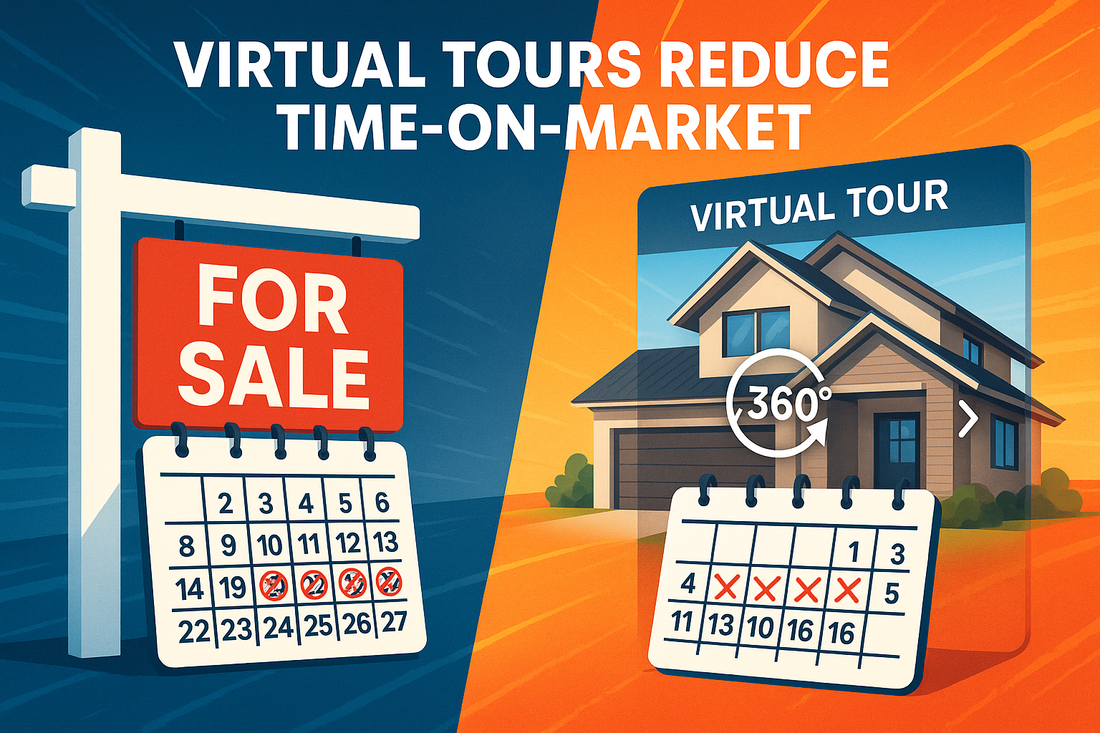
Case Study: How Virtual Tours Cut Time-on-Market in Half
Share
In today’s fast-paced real estate market, speed is everything. Homes that linger too long on the market often sell for less, while properties that generate early excitement frequently achieve better prices. One tool that has revolutionized the way properties are marketed—and dramatically reduced time-on-market—is the virtual tour. By allowing buyers to explore homes remotely in immersive 3D, virtual tours have become a game-changer for agents, sellers, and buyers alike.
Let’s dive into a real-world case study that illustrates exactly how virtual tours can cut selling time in half.
Background: The Challenge
A mid-sized real estate agency was managing a suburban property that had struggled to attract attention. Despite high-quality photos and traditional staging, the home remained on the market for 60 days, longer than the average for similar properties in the area.
The agency faced several challenges:
-
Buyers were hesitant to schedule in-person visits for a property that looked conventional online.
-
Competing listings with interactive features were attracting more interest.
-
Sellers were anxious about prolonged market exposure.
To address these issues, the agency decided to implement a virtual tour solution for the property.
Implementing Virtual Tours
Step 1: 3D Scanning and Photography
The property was scanned using 3D cameras that captured every room with high resolution. Each scan created a fully navigable map of the home.
Step 2: Interactive Tour Creation
The scans were converted into a virtual tour accessible via the agency’s website and major listing platforms. Features included:
-
360° panoramic views of each room.
-
Clickable hotspots highlighting key features such as built-in appliances, storage spaces, and architectural details.
-
Guided walkthrough options for buyers who preferred a curated experience.
Step 3: Marketing Integration
The virtual tour was embedded in online listings, shared on social media, and promoted via email campaigns targeting local and out-of-town buyers.
Results: Cutting Time-on-Market
Increased Online Engagement
Within the first week of launching the virtual tour, the listing received three times the average number of views compared to previous listings with only static photos. Users spent more time exploring the property, indicating stronger interest.
Higher Quality Leads
Because buyers could fully explore the property online, in-person showings were limited to genuinely interested prospects. This reduced wasted appointments and increased the likelihood of offers from serious buyers.
Faster Sale
Thanks to the virtual tour, the property attracted multiple offers within 30 days, effectively cutting the original time-on-market in half. The home sold above the initial asking price, demonstrating that immersive digital experiences not only speed up sales but can also improve financial outcomes.
Why Virtual Tours Work
1. Immersive Buyer Experience
Virtual tours allow buyers to explore properties as if they were physically present, giving them a realistic sense of space, layout, and flow. This immersion builds confidence and accelerates decision-making.
2. Convenience and Accessibility
Buyers can view homes anytime, anywhere, without scheduling in-person visits. This accessibility is especially valuable for busy professionals, families, or international buyers.
3. Emotional Connection
Virtual tours allow buyers to imagine living in the space, from walking through the kitchen to envisioning furniture placement. Creating an emotional connection early helps drive faster offers.
4. Competitive Advantage
Listings with virtual tours stand out among static photo-based listings. They signal innovation and professionalism, attracting more attention from both buyers and agents.
Broader Implications for Real Estate
This case study illustrates a trend that is reshaping property marketing: digital tools are no longer optional—they are essential. Virtual tours:
-
Reduce time-on-market across residential and commercial properties.
-
Improve the quality of buyer leads, increasing the likelihood of closing.
-
Enhance agent credibility and seller satisfaction by demonstrating cutting-edge marketing practices.
Agents who adopt virtual tours consistently see faster sales and stronger client engagement, making them a key differentiator in a competitive market.
Final Thoughts
The success of this case study shows that virtual tours are more than a marketing gimmick—they are a strategic tool that accelerates sales, reduces wasted effort, and enhances the buyer experience. By giving buyers an immersive, convenient, and emotionally engaging way to explore properties, virtual tours help homes sell faster, often at better prices.
For agents and sellers, the takeaway is clear: embracing virtual tours is an investment in efficiency, credibility, and results. In a market where time is money, the ability to cut time-on-market in half isn’t just impressive—it’s transformative.
